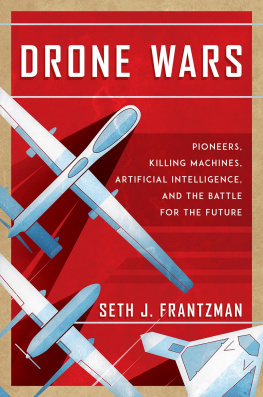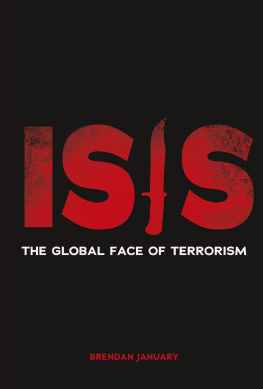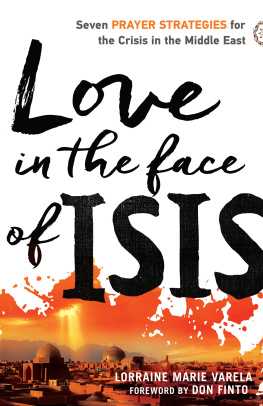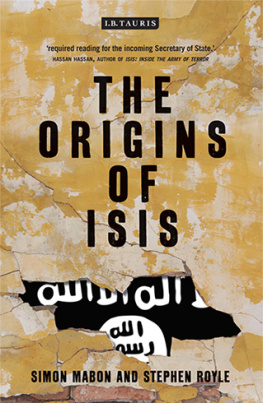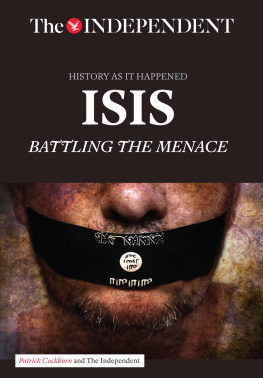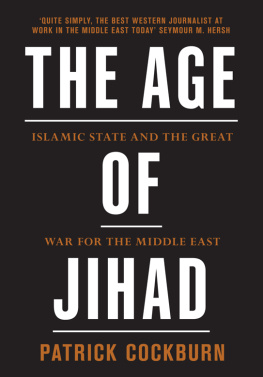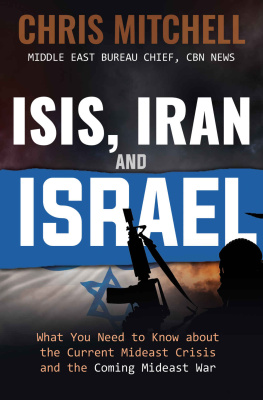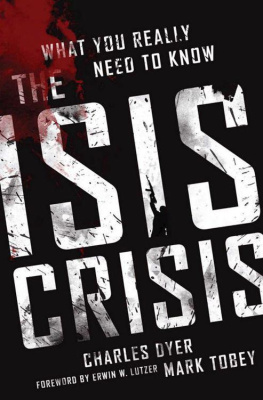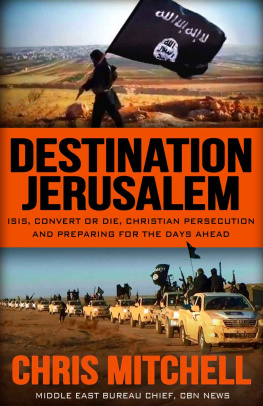Thank You for Downloading this Gefen Publishing House Ebook.
Sign up for our free weekly newsletter and get special offers on exciting new titles about Israel, Judaism and the Jewish People.
To sign up click here!
ADVANCE PRAISE
F ascinating, terrifying, and highly insightful, a superb account of the rise and fall of ISIS by a writer who is both a roving war reporter who has visited and observed all over the region and an acute and shrewd analyst of war and power in the Middle East. Excellent. Essential reading.
Simon Sebag Montefiore, author of Jerusalem: The Biography
This book is a must-read for policy-makers and everyone interested in the rise and defeat of ISIS and what happens next. A seasoned Middle East war reporter, Seth Frantzman has travelled to many of the places he writes about and met the protagonists. His unique insights help us understand the global jihadist phenomenon, its wider consequences and how to deal with it.
Colonel Richard Kemp CBE , Former Head of International Terrorism Intelligence, UK Cabinet Office
Insightful and gripping reporting from the nightmare ISIS made. A tour de force of todays, and probably tomorrows, bloody frontlines in the Middle East.
Ambassador Alberto Fernandez, President, Middle East Broadcasting Networks
A panoramic, fascinating account of how the ISIS Caliphate emerged, rose up and was destroyed. After ISIS combines a cogent analysis of the Islamic State phenomenon, with a compassionate empathy for those caught up in the terrible suffering wrought by this organization.
Jonathan Spyer, journalist and Middle East analyst; author of Days of the Fall: A Reporters Journey in the Syria and Iraq Wars
A man of conviction whose work is so important and his reports on Mosul will always be considered when we review the history of what happened.
Mohammed Omar, founder, Mosul Eye
Often lost in the coverage of ISIS s barbarity were the victims. Seth Frantzman provides a chilling on-the-ground account of the people who suffered at the hands of the militant group and paints a terrifying picture of just how close the modern Middle East came to being wiped off the map.
Conor M. Powell, veteran foreign correspondent
In After ISIS , Seth Frantzman has masterfully combined field reporting with high-quality analysis. This book is a unique contribution from one of the most authoritative voices in the field.
Sirwan Kajjo, Kurdish affairs analyst
AFTER
ISIS
America, Iran and the Struggle
for the Middle East
AFTER
ISIS
America, Iran and the Struggle
for the Middle East
S ETH J. F RANTZMAN

Copyright Seth Frantzman
Jerusalem 2019/5779
All rights reserved. No part of this publication may be translated, reproduced, stored in a retrieval system or transmitted, in any form or by any means, electronic, mechanical, photocopying, recording or otherwise, without express written permission from the publishers.
Cover Photos: Seth Frantzman
Cover Design: Benjie Herskowitz
Typeset in Arno Pro by Raphal Freeman, Renana Typesetting
ISBN : 978-965-7023-09-9
135798642
Gefen Publishing House Ltd. 6 Hatzvi Street Jerusalem 94386, Israel +972-2-538-0247 | Gefen Books 140 Fieldcrest Ave. Edison NJ , 07081 516-593-1234 |
www.gefenpublishing.com
Printed in Israel
***
Library of Congress Control Number: 2019909191
For Kasaey

Contents
Preface
T he war on ISIS is now largely behind us. But its effects will be felt throughout this century. In many ways the conflict formed a bookend to the optimism that emerged from the end of the Cold War. The brutal horrors of the selling of people into slavery and of mass murder that ISIS perpetrated in Iraq and Syria were made even more real by being carried out through social media, using the latest technology. If news of Auschwitz had to be smuggled out and could be dismissed as terrible rumor, ISIS boasted on Twitter, Facebook and elsewhere of its crimes.
The war on ISIS ends without a clear victory. This presents the question of whether winning the war will mean winning the peace. The US appears to be at a crossroads in its foreign policy, seeking to withdraw from Syria and wrap up the conflict while still leading a seventy-nine-member Global Coalition to Defeat ISIS . With the Syrian civil war largely over, the major winners are Iran, Russia and Turkey.
The ISIS war took place against the backdrop of the Syrian conflict and a changeover in US administrations. This means that it occurred during the rise and fall of the Iran nuclear deal. That places it at a key point in history, not only for the Middle East but also for the US and Iran. Emerging from the rubble of the war is a more robust and powerful Iran. The defeat of some of the last ISIS remnants near Baghuz, Syria, in February 2019 coincided with the fortieth anniversary of the Islamic Revolution in Iran. As President Hassan Rouhani boasted in Tehran of success, Irans foreign minister Javad Zarif traveled to Lebanon.
For US allies, such as Israel, the post- ISIS period presents new uncertainty. From the chaos and instability of years of conflict come new question marks about US commitment to the Middle East and whether the end of one war will lead to another, much as the end of the Second World War led to the Cold War.
There is creeping pessimism in world affairs after the ISIS conflict. Authoritarianism is on the rise. Some of that authoritarianism is a response to the extremism and terrorism that gave rise to ISIS . Some of it is a response to the period of international instability that flowed from the end of the Cold War, when US hegemony quickly gave way to a variety of states seeking to challenge the US . It is no surprise that Britains move to leave the European Union began during the ISIS war as the waves of refugees fleeing Syria and elsewhere, some of them caused by this fight, fueled Brexit. These conflicts are all connected.
The lesson of five years of global war against ISIS is that local conflicts cannot be ignored and that they will have unexpected repercussions. The after- ISIS period calls on us to be more vigilant and to confront groups like ISIS early on, before they commit genocide and alter the course of history.
Jerusalem, 2019
Prologue
I raq, Sinjar, December 2015. Major Adel Sleman poured more sweet tea into a small glass. It was cold outside the half-built shed we were sitting in, and we inched closer to the jet-black stove. Kurdish men stood next to small mattresses they had arranged on top of cinder blocks around the stove. Each man seemed to have a different style of camouflage. The pot-bellied major with his loose-fitting fatigues looked dressed ready to blend into a jungle. His colleague Major Hussein Yusuf wore forest green. Even though it was cold, the two men didnt put on coats.
Ive spent nineteen years working in demining, said Sleman. Born in 1963 in northern Iraqs Kurdish region, he had been a Peshmerga, or Kurdish soldier, since the 1990s. The younger men under his command, making their beds in a nearby house, were new to soldiering. Sometimes we are here for a month, or up to six months. It depends on necessity.
Here, for now, was an abandoned house at the foot of Mount Sinjar in northern Iraq. Id arrived at night, so the mountain looming behind us only appeared in my imagination. A long hump rising out of the tan desert was what it was supposed to look like, according to photos Id seen online. The drive over the mountain that night had been done in pitch black. There was no electricity in this part of Iraq. The infrastructure, such as power lines, had been destroyed during the battles to liberate the area from Islamic State.
Next page

